PC Hardware book
286 and 386 PC hardware
The second generation PC was the
PC/AT and these computers used the 80286
processor. This generation of PC computer had a 16 bit external
data bus and a 24 bit address bus. The bus connectors
used in the first generation PC/XT had to be enhanced by the addition of the
AT extensions to provide for the extra data and address lines,
and more IRQ and DMA lines. Here is a PC/AT clone, usually just called a 286
computer, named after the 80286 processor used.
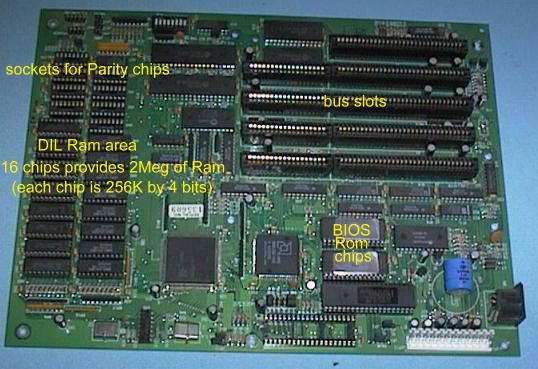
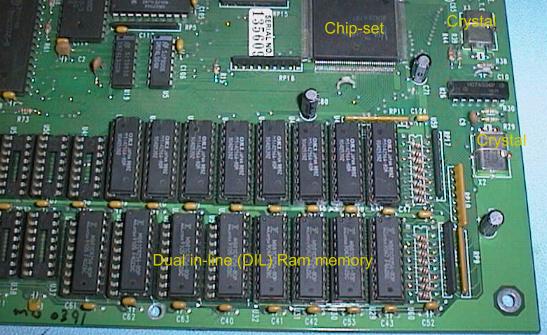
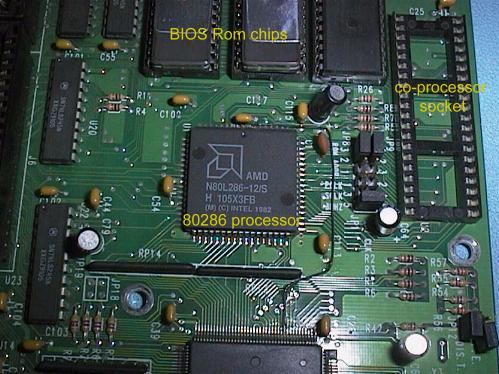
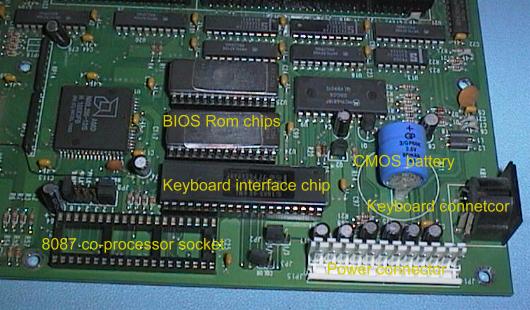
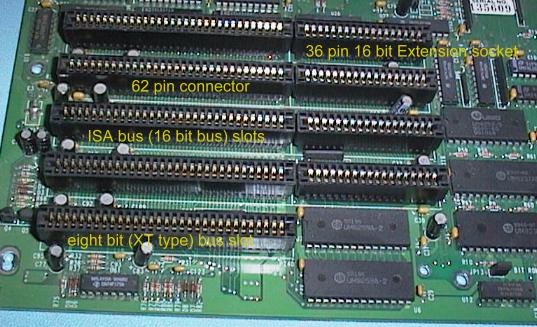
Early PC/AT (286) computers could only accommodate one or 2 Meg Byte of RAM
memory on the System Board and so RAM Expansion boards were
available. Here is an example of one such board.
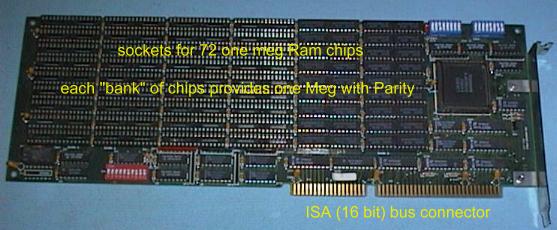
RAM on an card plugged into an ISA Bus slot is accessed at only 8
MHz, instead of the Internal Bus Speed of the computer. RAM on the System Board
is on a "Local Bus" with the Processor and operates at the Bus Speed of the
Processor.
IBM introduced a more advanced video system called EGA (Enhanced
Graphics Adaptor) in 1983. The Video Interface card operated at
resolutions up to 640 by 350 and supplied six "TTL" video signals to the Video
Display Monitor via a DB9 connector. The six video signals meant an EGA card
could provide 64 (6 2) colours if it was fitted with enough Video
Memory.
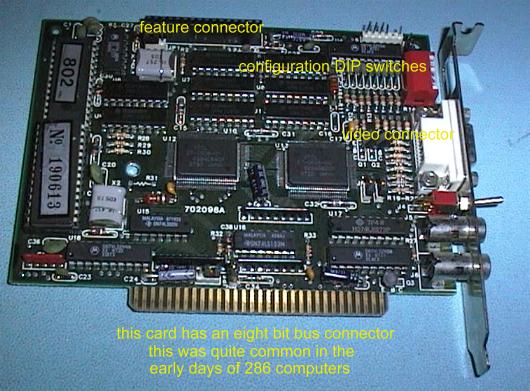

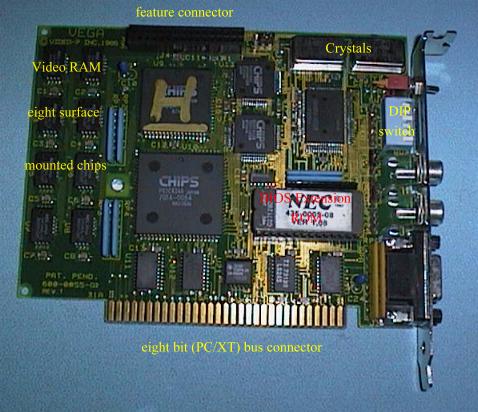
The first 80386SX generation System Boards still used Dual In Line (DIL) RAM
technology and also had sockets for Single Inline Package (SIP) devices.
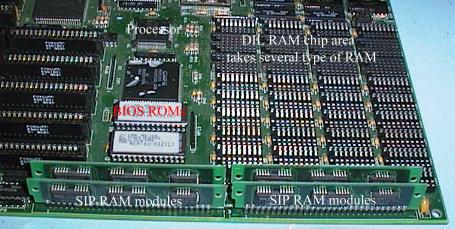

The later System Boards were much smaller because of the use of SIMM RAM only,
and the use of a more highly integrated Chipset. Older Chipsets required four
device packages for the Chipset, later boards had a Chipset consisting of only
one or two chips. This is an example of the last of the 80386SX
System Boards.
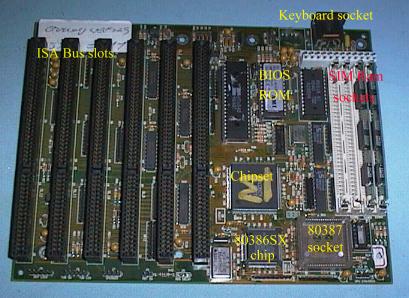
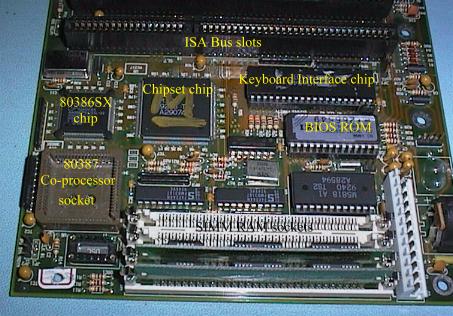
This System Board has only four 30 pin SIMM sockets. The 80386SX
processor accessed RAM 16 bits at a time and so two 30 pin SIMM RAM was required
per bank of memory. Each SIMM is eight bits (nine bits with parity) wide.
The 80386DX processor introduced 32 bit busses to the PC computer. For a long
time the 32 bit bus was only used internally on the System Board between the
processor and the memory. The 16 bit ISA Bus continued to be used to connect
peripherals via plug in cards. Here is one of the last of the 386DX
generation of System Boards.
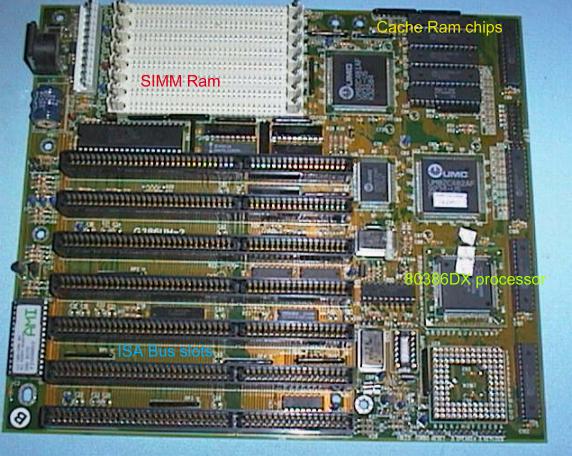
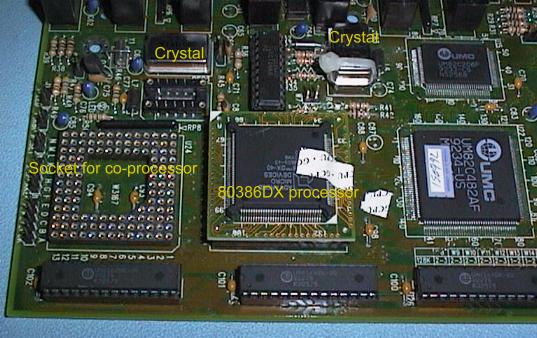
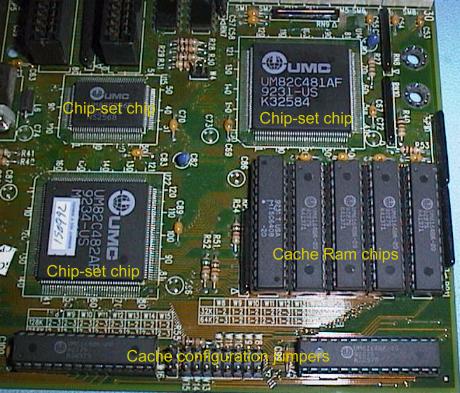
This is an 80386DX System Board and as this processor accesses RAM
32 bits at a time, four 30 pin SIMM RAM are required per bank of memory. Most
80386DX System Boards, had eight 30 pin SIMM sockets.
By the time the 386 was the most common computer, VGA Video was
the most common video system in use. Unlike the earlier video systems,
VGA uses analog video signals from the video
card to the monitor. The high density or Miniature DB15
connector supplies three video signals, (red green and blue), and two
synchronization signals, (horizontal and vertical), to the monitor.
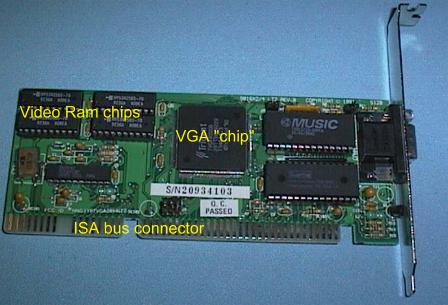

A Network card is a common option in modern PC computers. Two
types of network cable are in common use. Coaxial wiring uses
BNC connectors and twisted pair wiring uses
RJ45 connectors.
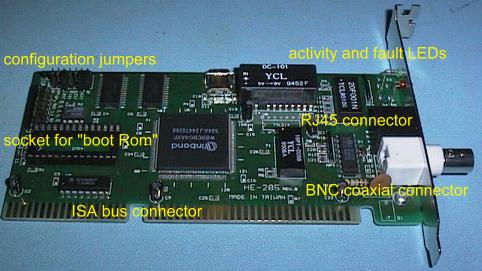
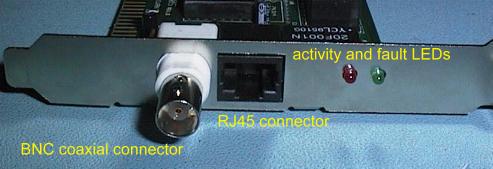
The most poplar, x86 Family
XT
Computers (8086)
80286
(16 bits Data Bus)
80386
(The First 32 bits Data Bus) (Compatible with Windows`95)
80486 (High Performance)
Pentium, 5x86
and 6x86 family
Anexos
Terminology Computer Glossary
Connectors
used with PC Computer hardware
Floppy disk drive
hardware
Storage devices
The PC busses
Home
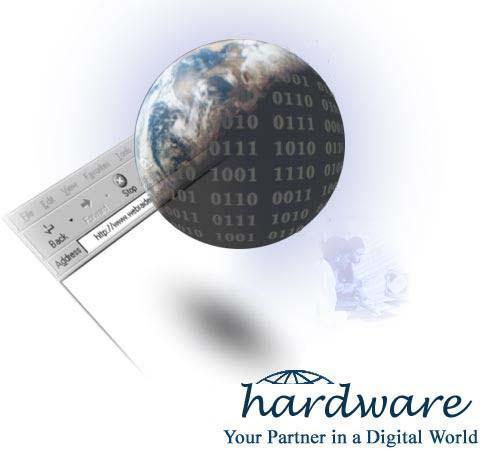
Webmaster Joel Cruz Silva e-mail: [email protected]
Tel: 53 07 835 8373
Ciudad de la Havana - Cuba

























